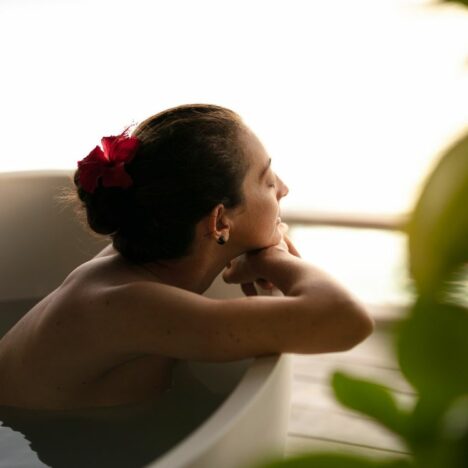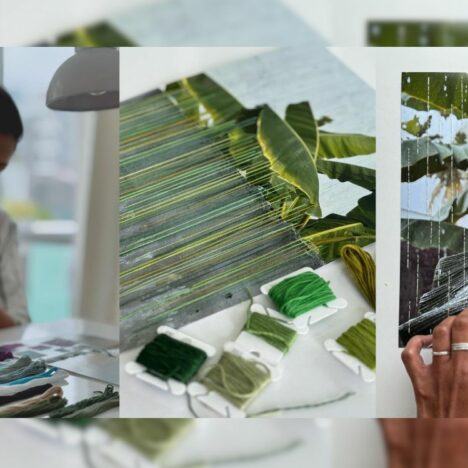Travel BlogMay 29, 2023
Preserving Heritage: Traditional Arts and Crafts on Local Islands
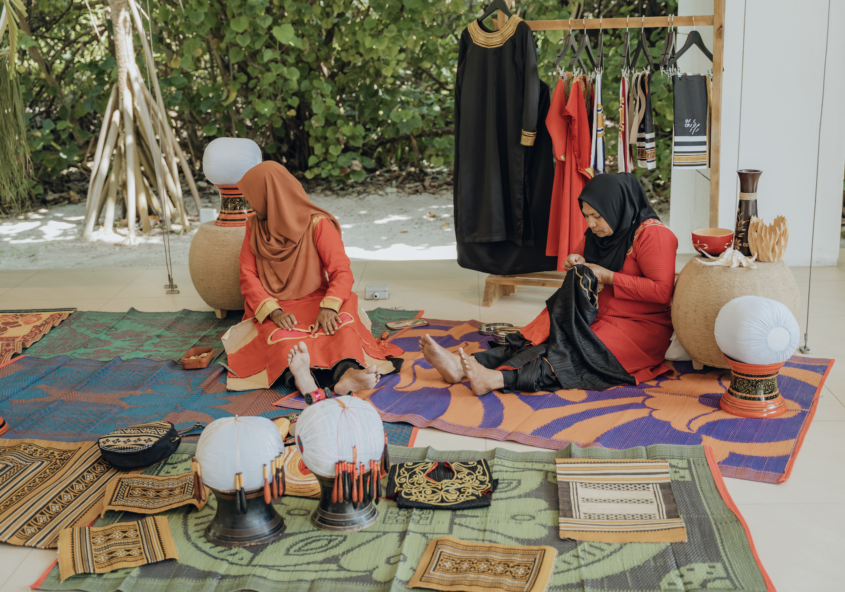
The Maldives is renowned for its pristine beaches and turquoise waters. But beyond its natural beauty, the Maldives also boasts a rich cultural heritage that is deeply rooted in traditional arts and crafts. On the local islands, where life unfolds at a slower pace, these timeless crafts have been preserved and nurtured, serving as a testament to the islanders’ connection with their history and traditions. Let’s delve into the captivating world of mat weaving, embroidery (kasabu boavalhu libaas), coir making, and lacquer work, which continue to thrive on these local islands.
Mat Weaving
Mat weaving is an integral part of the Maldivian cultural fabric. The skill of mat weaving has been passed down through generations, ensuring that this craft remains alive and vibrant. Skilled artisans employ age-old techniques, using natural materials such as reeds, rushes, and grasses, to meticulously craft beautiful mats. These mats serve a multitude of purposes, from providing comfortable seating areas to being used as floor coverings or even as decorative pieces in homes and resorts. The patterns and designs on these mats often reflect the local islanders’ deep connection with the sea, showcasing motifs inspired by marine life and the waves that surround them.
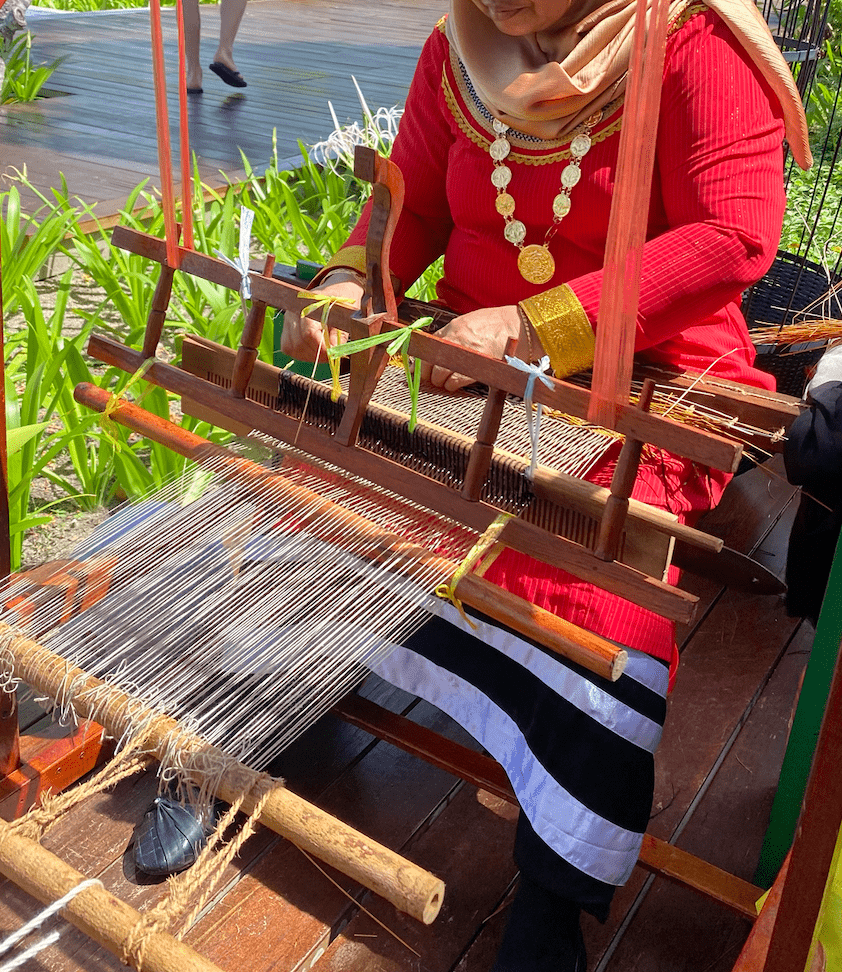
Embroidery (Kasabu Boavalhu Libaas)
Embroidery, especially the intricate style known as “Kasabu Boavalhu Libaas,” has long been a cherished tradition in the Maldivian culture. This delicate craft involves adorning fabrics with elaborate designs using metallic threads, beads, and sequins. The artful stitching adds a touch of elegance and opulence to garments, making them truly unique. In the past, Kasabu Boavalhu Libaas was primarily used to embellish women’s clothing, reflecting their sense of identity and cultural heritage. Today, this exquisite embroidery technique continues to thrive, with artisans incorporating contemporary elements while staying true to the traditional motifs that have been passed down through generations.
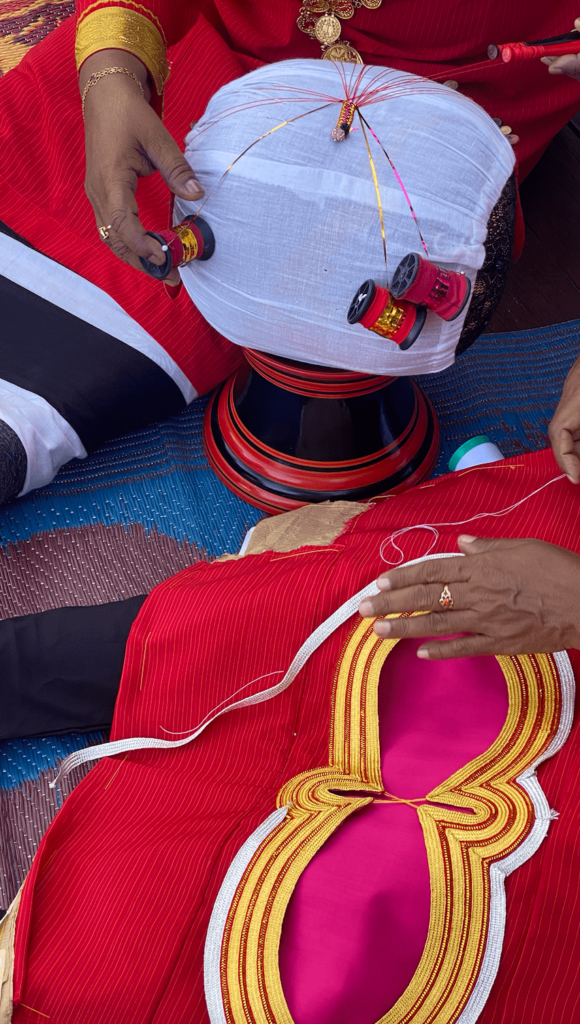
Coir Making
Coir-making in the Maldives is a craft deeply intertwined with the islanders’ close relationship with nature. Derived from the husk of the coconut, coir is a versatile natural fibre that has been utilized for centuries. Skilled artisans extract, process, and weave this fibre into various products, including mats, ropes, and brushes. Coir products not only reflect the islanders’ resourcefulness and sustainable practices but also showcase their intricate weaving techniques. The sturdy and eco-friendly nature of coir products has made them highly sought-after both locally and internationally.
Lacquer Work
Lacquer work in the Maldives represents a harmonious fusion of woodworking and decorative techniques. Artisans apply layers of resinous lacquer to wooden surfaces, transforming them into exquisite pieces of art. The craftsmanship involved in lacquer work is awe-inspiring, combining intricate carving, inlaying, and painting to create intricate designs. The glossy and lustrous finish achieved through this meticulous process adds an element of sophistication to the final product. Lacquer work has adorned furniture, boxes, and decorative objects in the Maldives for generations, providing a visual narrative of the islands’ cultural and artistic heritage.
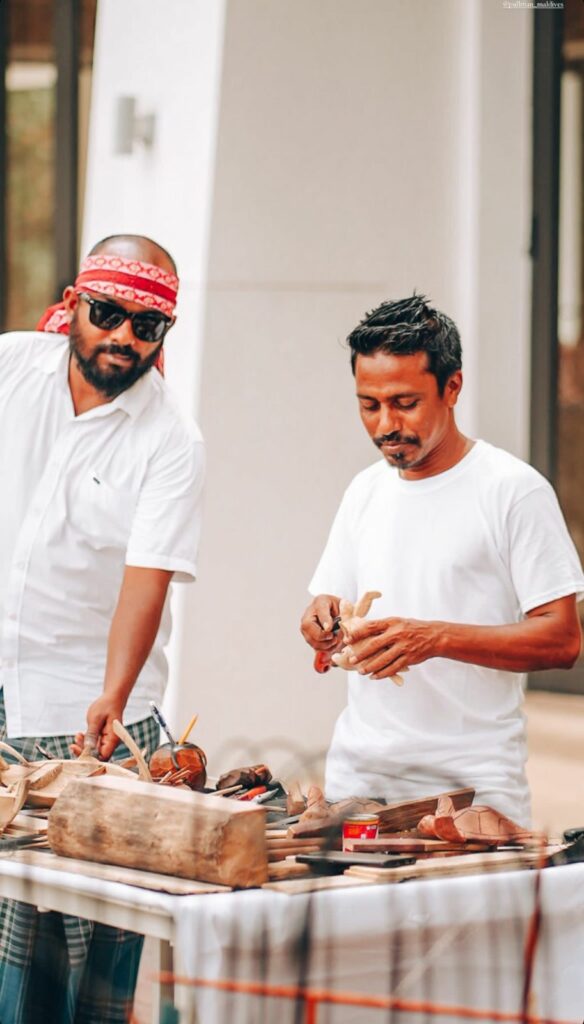
Preserving and Nurturing Traditional Crafts
Efforts to preserve and nurture these traditional arts and crafts on local islands are crucial for the continuation of the Maldivian cultural legacy. Organizations, communities, and individuals dedicated to the preservation of these crafts are playing a pivotal role in raising awareness and supporting local artisans. A great example could be the recently held Art Week by Pullman Maldives. By promoting these traditional crafts, the Maldives not only preserves its cultural heritage but also creates sustainable economic opportunities for local communities.
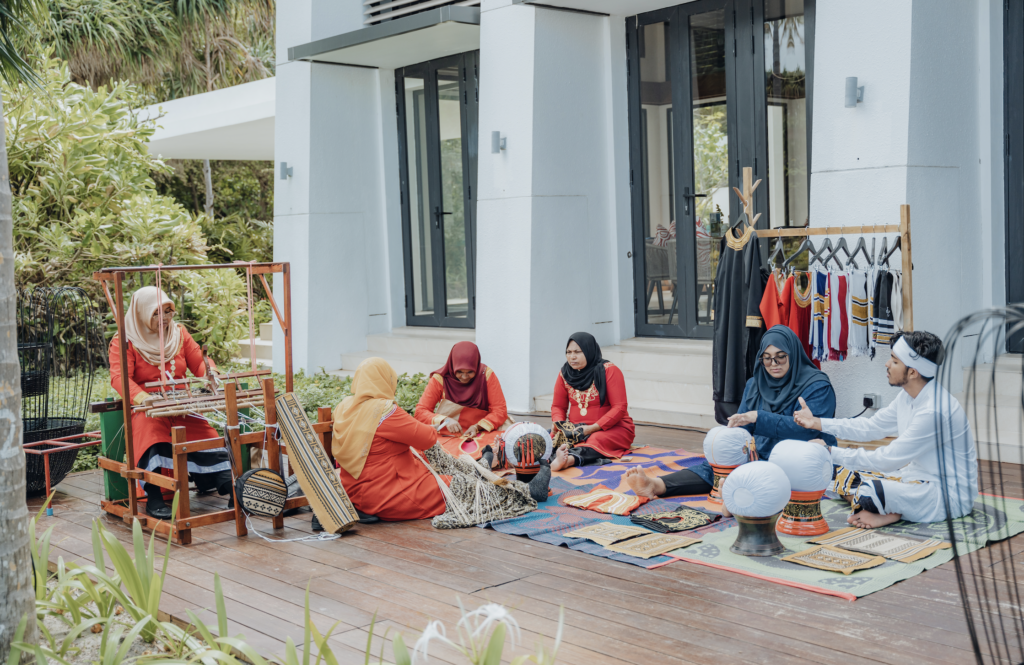
As visitors explore the idyllic local islands of the Maldives, they have the unique opportunity to witness the artistry and craftsmanship behind these traditional arts and crafts. By engaging with local artisans and supporting their work, travellers can contribute to the preservation and continuation of these invaluable cultural traditions. Preserving and promoting these crafts is crucial for ensuring that the Maldivian cultural legacy continues to thrive, delighting both locals and visitors alike.


